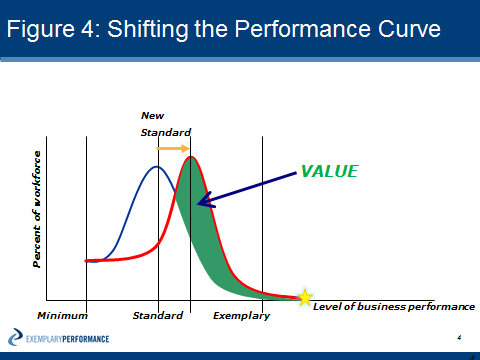ATD Blog
Shifting the Performance Curve
Thu Sep 19 2013

Bookmark
Does the great bulk of your team meet expectations represented by the center of the graph below? In other words, is the performance “standard” in comparison to others? You probably would say “yes.”
Yet, we all recognize that some team members, day in and day out, produce exceptional results. These stars are represented by the star on the far right of the graph.
Think about it. Do you know any truly talented people who have underachieved in their careers? These are the people who bring significant potential to the table, but perform at or below an established standard. Why? Because talent is a measure of the potential to perform, not of performance.
Businesses do not succeed because they have potential. They succeed because they produce results. Let me state this in a different way. People with high potential (the capacity to succeed) don't drive successful companies. Rather, successful companies are driven by people who routinely accomplish exceptional results.
So, the stars that make such a significant difference in our businesses are those individuals who have the potential to succeed AND make the effort to improve in their role day in and day out. The implications of this are staggering for those of us who manage individuals, teams, departments, divisions, and companies.
If variance in the performance of people and teams is not determined simply by the raw talent you have acquired, then l****eadership has the capability to shift the performance curve.
The focus needs to move from inputs (talent, potential, competencies) to the outputs that matter (revenue, accomplishments, customer retention).
What type of employee do you think is valued the most?
Employees who knew more, had greater skills and competencies, and scored higher on relevant tests
Employees who were busy all the time
Employees who consistently produced outstanding results that drove the corporate strategy and initiatives
Contribute to the blog and see what feedback you receive.
For more on how to shift the performance curve, check out Paul’s previous blog article in this series.
More from ATD

